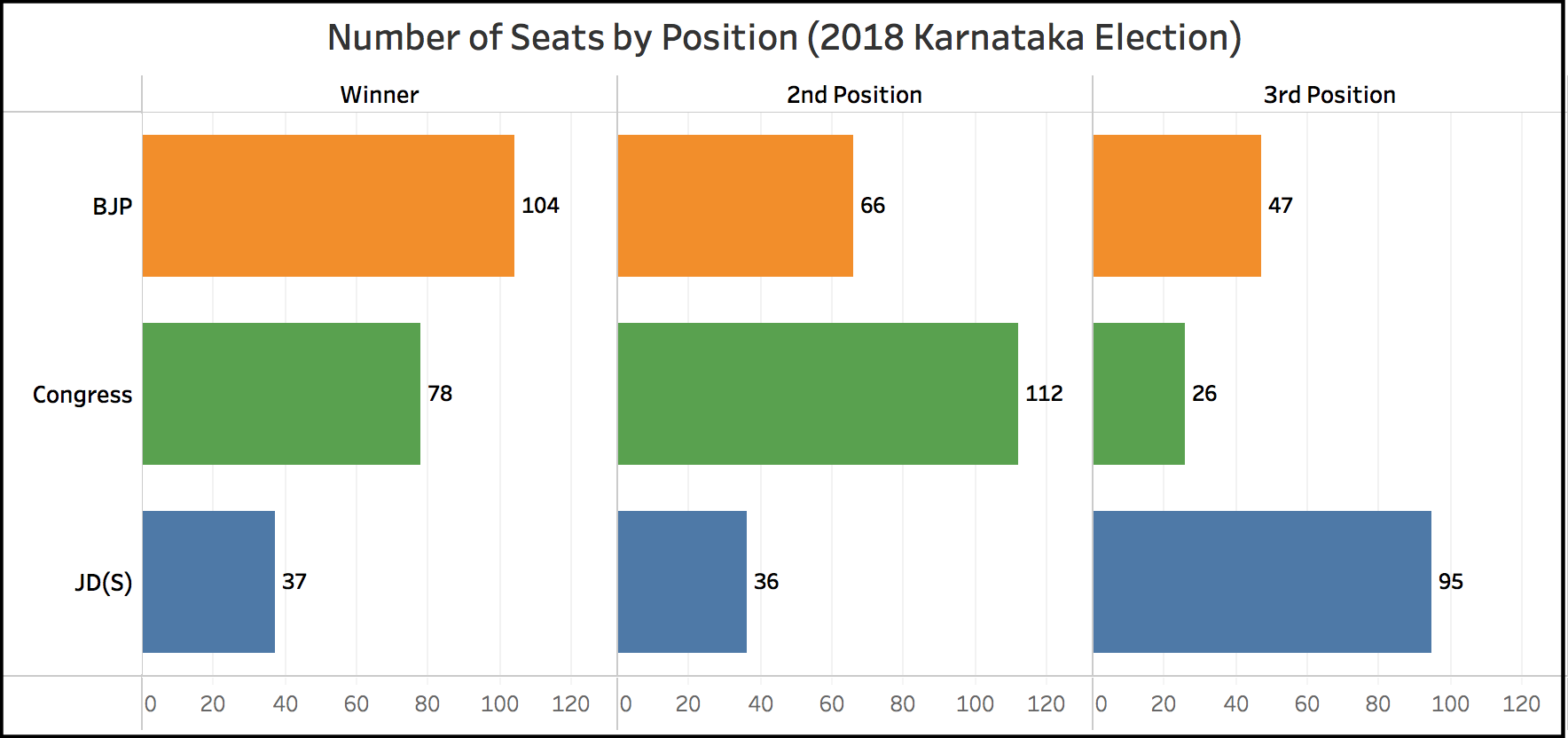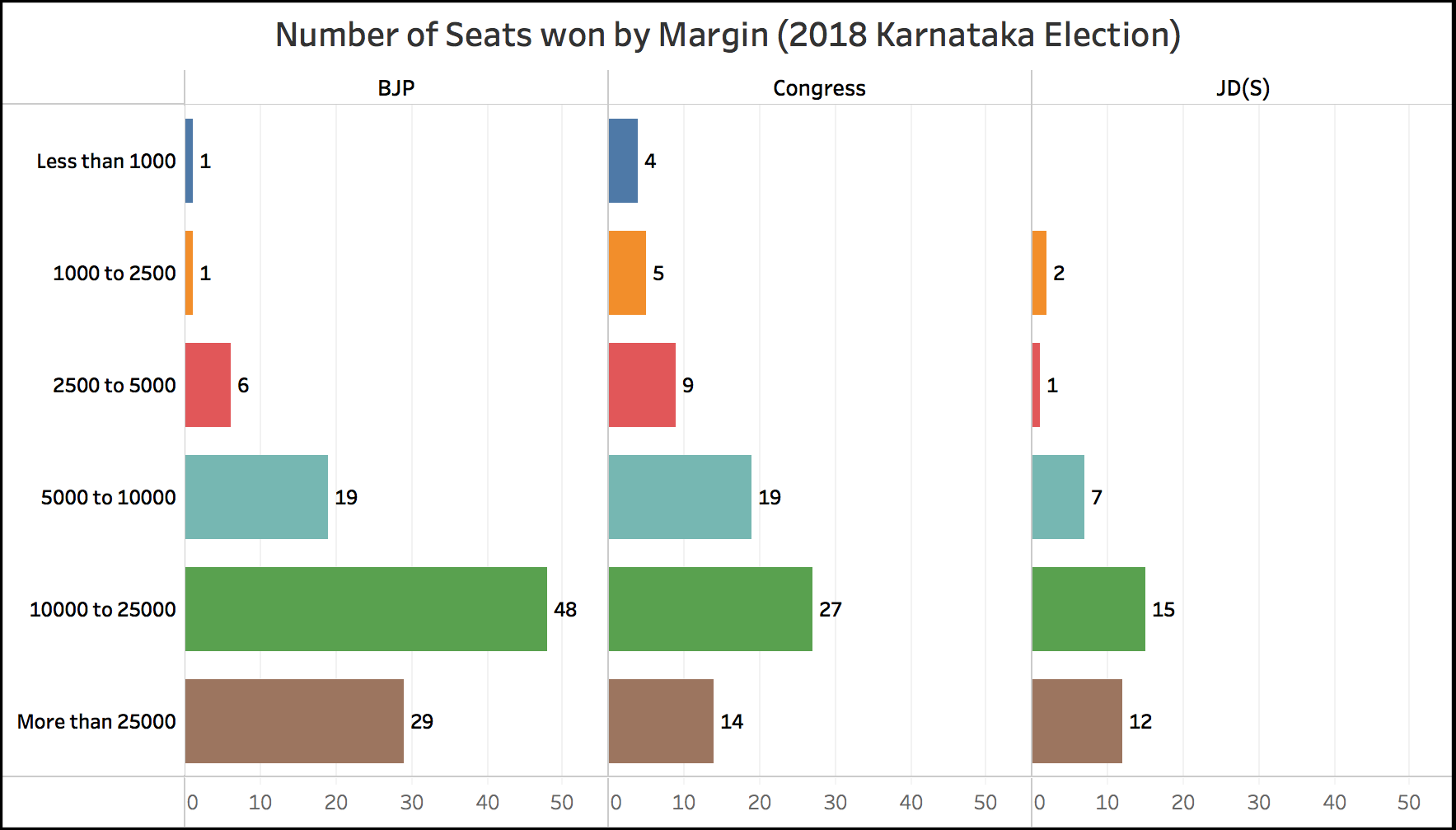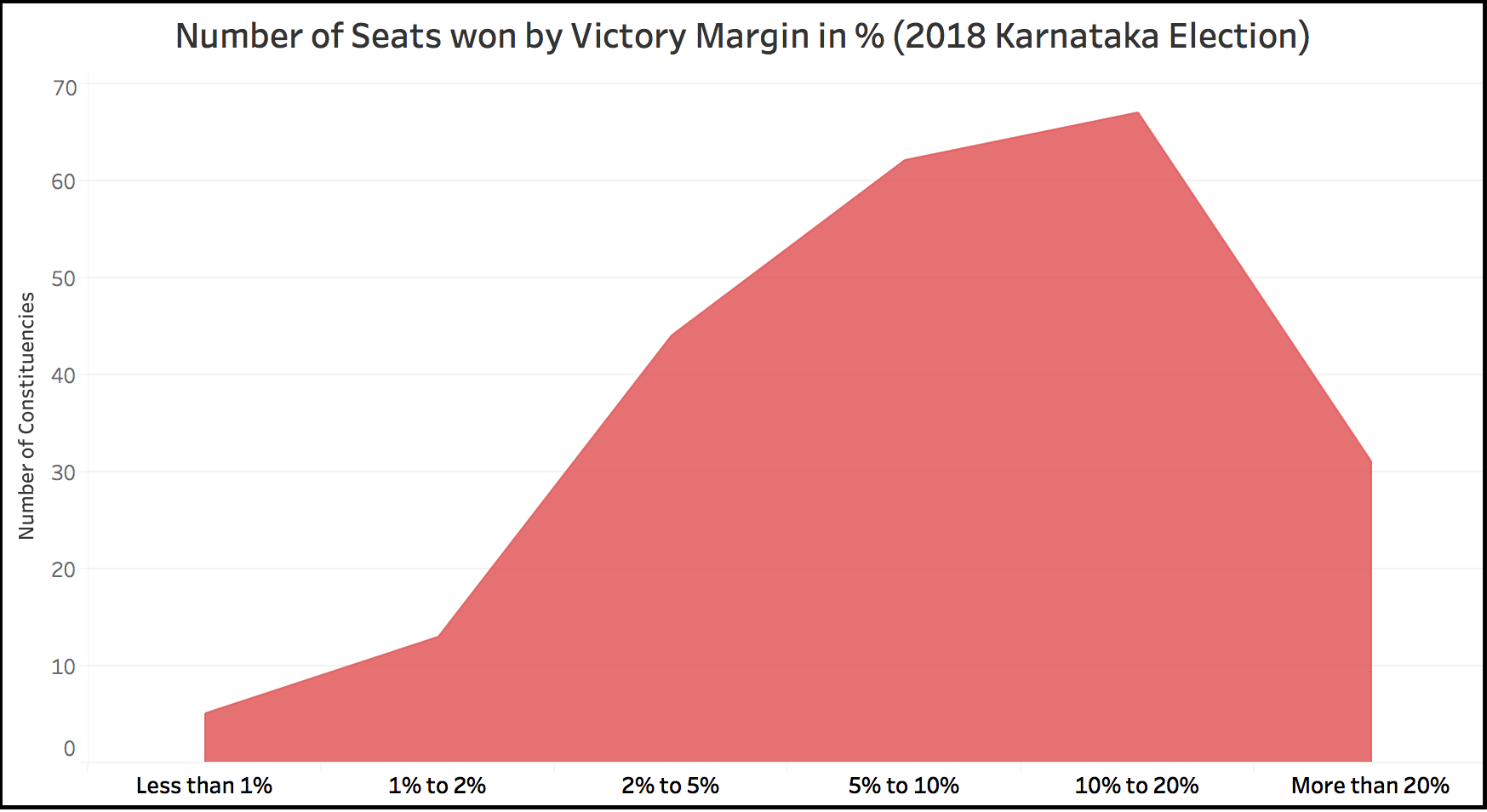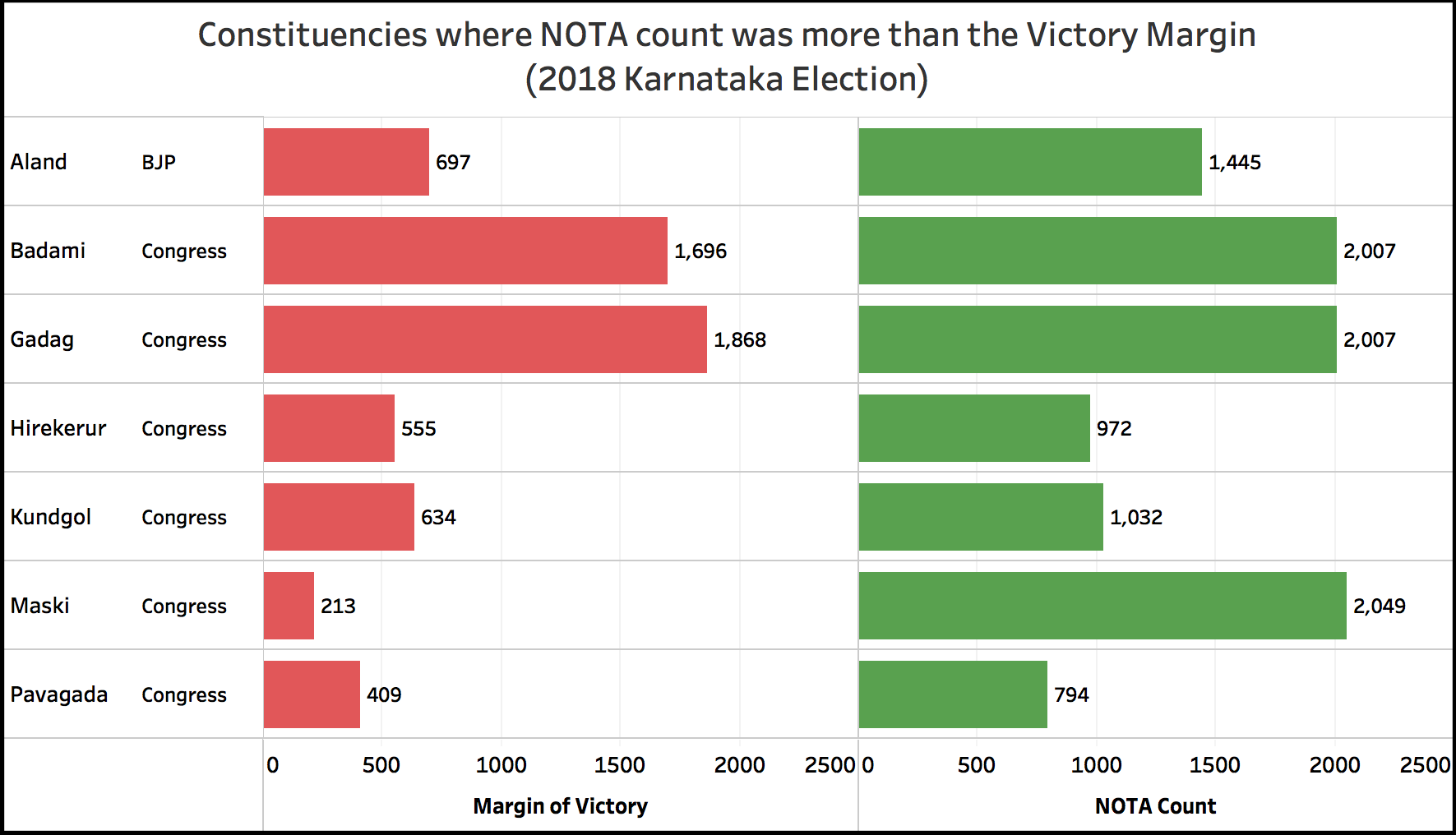[orc]Ever since the ‘None of the Above (NOTA)’ symbol was introduced on the EVMs in 2015, there is considerable interest on the number of votes polled for NOTA in every election. In the 2018 Karnataka Assembly elections, NOTA polled only 0.9% of the total vote and NOTA count was more than the victory margin in only few constituencies.
The 2018 Karnataka elections resulted in a hung assembly with BJP emerging as the single largest party and Congress winning the popular vote. Here is a compilation of some important highlights of the election results.
JD(S) was in fray in only about 70 seats
Though the JD(S) has emerged as the king maker in this election, it was seriously in contention only in about 70 odd constituencies, concentrated around the Old Mysuru region. The BJP won 104 seats and stood 2nd in 66 constituencies while the Congress won 78 seats and stood 2nd in 112 constituencies. The JD(S) on the other hand won 37 seats and stood 2nd in only 36 constituencies.
 BJP won more than 70% of the seats by a margin of more than 10000 votes
BJP won more than 70% of the seats by a margin of more than 10000 votes
In terms of margin, a total of five (5) seats were won with a margin of less than 1000 votes. Four of these were won by the Congress and the remaining by the BJP. The lowest victory margin was 213 votes in Maski. Further, a total of 13 seats were won with a margin of less than 2500 votes. Out of these, Congress won 9, BJP won 2 and the JD(S) won the remaining two. BJP won more than 70% of the seats with a margin of more than 10000 votes. In fact, of all the seats where the victory margin was more than 10000 and more than 25000 votes respectively, BJP won more than 50%.
 More than 150 seats were won with a margin of more than 5%
More than 150 seats were won with a margin of more than 5%
Karnataka 2018 was not one of those closely fought elections in terms of victory margin. If one looks at the victory margin in terms of percentage of votes polled, in only 5 constituencies, the victory margin was less than 1% of the votes polled. In 13 other constituencies, the margin was between 1% & 2% while in 44 constituencies, the margin was between 2% & 5%. The margin was more than 20% of the votes polled in 31 constituencies and more than 30% in eight constituencies. Overall, the margin was more than 5% in 160 constituencies. The greatest victory margin in terms of percentage of votes polled was in Pulakeshinagar where the Congress candidate won by a whopping margin of 64.6% of the votes polled. This is the greatest margin even in terms of the absolute votes (majority of more than 80000 votes).
 NOTA polled only 0.9% vote
NOTA polled only 0.9% vote
NOTA accounted for just over 3 lakh votes in this election which is 0.9% of the total votes polled. The 0.9% for NOTA in the 2018 Karnataka election is on the lower side when compared to the votes polled for NOTA in other state elections. For instance, NOTA polled 1.8% of the votes in Gujarat (2017). 2.5% in Bihar (2015) and 1.52% in West Bengal (2016).
NOTA polled the highest in Bangalore South constituency. Here, NOTA polled 15829 votes and was in the 4th place after the three major parties. In 28 other constituencies, NOTA polled more than 2000 votes. Majority of these constituencies are in the urban areas.
 NOTA count more than victory margin in Seven constituencies
NOTA count more than victory margin in Seven constituencies
The votes polled for NOTA was more than the victory margin only in seven constituencies of which six were won by the Congress. These include Aland, Badami, Gadag, Hirekerur, Kungdol, Maski and Pavagada. Badami is where the former Chief Minister Siddaramaiah contested from and won. This number in Karnataka is less than what it was in other state elections. In Gujarat 2017, there were 30 constituencies where the NOTA count was more than the victory margin. In Bihar 2015, this happened in 21 constituencies and in the 2016 elections to West Bengal & Tamil Nadu, this happened in 24 constituencies in each of the states.




2 Comments
Pingback: NOTA: The secret weapon of Congress in 2019 elections
Pingback: Biggest loser of DUSU Elections are the NOTA warriors